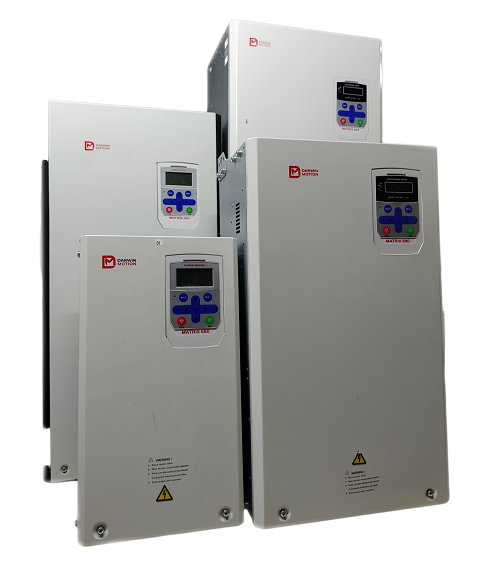Posted on 3rd Dec 2024

A Variable Frequency Drive (VFD) is a crucial component in modern industrial applications, used to control the speed, torque, and direction of electric motors. By adjusting the frequency and voltage supplied to the motor, a VFD provides greater flexibility, energy efficiency, and control compared to traditional methods. However, not all motor loads are created equal, and VFDs interact with different load types in unique ways. Understanding these load types is essential for selecting the right VFD, ensuring optimal performance, and maximizing energy savings.
This article explores the various types of loads that an ac drive can control, including constant torque, variable torque, and constant power loads. Each load type has specific characteristics that influence how a VFD should be applied and configured.
Constant torque loads are the most common type of load encountered in industrial applications. These loads require a constant amount of torque regardless of the motor speed. Examples include conveyors, positive displacement pumps, mixers, and crushers.
In constant torque applications, the torque required to overcome the load does not change with speed. This means that as the motor speed is adjusted by the VFD, the required torque remains constant. For instance, if a conveyor is moving a heavy, consistent load, the torque required to move that load stays the same whether the conveyor is moving slowly or at full speed.
VFDs controlling constant torque loads typically operate over a wide speed range without encountering significant changes in efficiency. Since the torque requirement remains steady, the VFD adjusts the motor’s voltage and frequency accordingly. A properly sized VFD ensures that the motor operates at peak efficiency across the desired speed range.
While constant torque loads can be more energy-intensive than other load types, the energy savings achieved through VFD control can still be significant, particularly when the motor is running at partial loads or lower speeds.
Variable torque loads are characterized by a load that requires torque that varies with the square of the motor speed. The most common example of a variable torque load is centrifugal equipment, such as fans, blowers, and centrifugal pumps.
For variable torque loads, the torque requirement increases with the square of the motor speed. This means that if a fan’s speed is reduced by 50%, the torque required is reduced by 75%. This relationship results in significant energy savings when the speed of the motor is reduced.
High Frequency Drive are particularly well-suited to controlling variable torque loads. By adjusting the motor speed, the VFD reduces the torque required to perform the task. Since the power consumption of a fan or pump is proportional to the cube of the speed reduction, significant energy savings can be realized by using a VFD to operate these types of loads at lower speeds.
The most significant advantage of using VFDs in variable torque applications is energy efficiency. By operating fans or pumps at reduced speeds during periods of lower demand, the VFD helps reduce the power consumption by a substantial amount. Energy savings of up to 50% or more are common in variable torque applications.
Constant power loads are less common but still significant in certain applications. These loads require a constant power input, regardless of the motor speed. Examples include certain types of rolling mills and crushers in heavy industries.
In a constant power load, the required power stays the same, but the torque varies with the speed. As the motor speed increases, the torque decreases in such a way that the product of torque and speed (i.e., power) remains constant. This type of load is typically encountered in specific industrial applications where high power is needed over a wide speed range.
For constant power applications, the VFD must maintain a consistent power level by adjusting the voltage and frequency supplied to the motor. The relationship between speed and torque is dynamic and complex, making it necessary for the VFD to be accurately configured to avoid instability or inefficient operation.
Although constant power loads do not offer the same potential for energy savings as variable torque loads, VFDs still provide more efficient operation compared to traditional control methods. In many cases, constant power loads are designed to operate at high speeds for extended periods, and the VFD ensures that the motor is not overworked, resulting in lower wear and tear.
In addition to constant torque, variable torque, and constant power, there are a variety of specialized load types that may be encountered in particular industrial applications:
These loads require a fixed current regardless of motor speed. Such loads can be challenging to control efficiently, and specialized VFDs are required to handle these applications. These loads are typically found in applications like traction drives and other specialized motors.
In some instances, loads like pumps and fans may behave as variable torque loads under certain conditions, but their characteristics may change depending on system variables such as system resistance or fluid viscosity. VFDs need to adapt to these changes dynamically.
When selecting a Variable Frequency Drive for a specific application, it’s essential to understand the type of load being driven. Constant torque, variable torque, and constant power loads each have unique characteristics that affect how a VFD should be implemented. The ability of a VFD to adjust motor speed efficiently leads to improved energy efficiency, better motor control, and reduced operating costs, making them indispensable tools in modern industrial settings.
By understanding the different load types and tailoring Darwin Motion VFD settings to match, industries can optimize their operations, reduce energy consumption, and extend the lifespan of their motor-driven equipment.